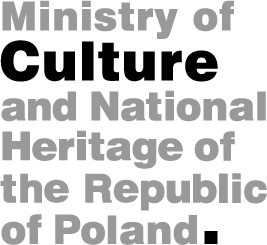|
|
traces of memory Original manuscripts of the memories of Włodzimierz Fiszer from 1935 – a land and water building engineer with a speciality of railway, a graduate the Lvov Technical University, member of the Lvov Academic Aviation Club who wrote and delivered his speeches at Lvov Radjo [sic!] on topics, such as: social issues, politics, technology and ethics Włodzimierz Fiszer (excursion two) "My impressions from the excursion to Tannenberg and (Grunwald) East Prussia on 26.VIII. 1934, on the day of the Germany nation's solemn celebrations of the 20th Anniversary of great and victorious German-Russian Battle of Tannenberg during the World War. My goals of sight-seeing: 1) the monumental "Nationaldenkmal" memorial built on the site of fights of v. Hindenburg, and 2) Hindenburg's tomb who is rested in one of the bastions of the memorial, and 3) the area on which Polish King Władysław Jagiełło won so magnificently over the Teutonic Knights in 1410. The excursion route: Tannenberg (Grunwald), Hohenstein, Waplitz, Tontzkern, Neidenburg, Koslau, Krasnołęka, Działdowo, Lidzbark page 1 Excursion to Tannenberg (Grunwald), East Prussia. 26 VIII 1934. We set off at 9:30 from Lidzbark in the Pomeranian area. The excursion was by cars. There were 60 people, mostly citizens of Lidzbark, from wealthier social strata; 30% of passengers were women. The route of the excursion led from the Prussian border, across the Town of Działdowo (Soldau) still on the Polish side. 25 kilometres to the Town of Lidzbark, (and) 7 km after Działdowo, at the place of Krasnołęka was stop at the checkpoint where each of the excursion-makers received a frontier passport "Grenzausweis" with Polish and German inscriptions. After a dozen or so of steps from the customs building there is a border check with the national emblem. The crossing of the border is only permitted at special hours, that is on weekdays from 7 am. to 7 pm. and on Sundays and holidays only before 4 pm. Having done all formalities regarding our passports we drove into a linden avenue, beginning right after the szlachbaum and crossed a bridge with two poles and plaques: one with the Polish national emblem, on the left-hand side of the bridge, and the other, visible from the German side, with the characteristic black German eagle and a Gothic inscription "Deutschland". After a dozen or so minutes, we stopped in front of a German customs-office check, next we drove up to the plaque saying "Halt Zollamt!". On the threshold of a building of a typical German style, stopped a German customs officer in a green uniform with golden, glittering epaulettes and other gleamy items, adding a solemn and serious looks to his figure. After a short stop and astonishingly expeditious formalities and – to a considerable surprise of travellers – with no personal search, we set off to continue our journey, entering the proper German land. Our route continued along the linden avenue the wide trees of which formed a green page 2 vault from entangled boughs and leaves, just above the heads of the passers-by. The weather was favourable to excursion-makers – glowing Sun cast its rays. Thanks to the roads excellently built and perfectly kept-up, our excursion was utterly pleasant and, were it not for the fresh breeze compounded by our considerable speed, one might believe it was a travel in a luxury-class sleeping carriage instead of a common truck, converted into a sort of a coach, which we actually used for travelling. The first settlement we ran across on the German side was the place of "Koslau" (a village). The plethora of various sorts of advertising posters and announcements, as well as the regularity of the arrangement of buildings, practically totally stone and/or brick and covered with ceramic tiles, add a cultured look to even the smallest German settlement, making it similar to a township. Among the multitude of various posters, a large one, persuading people to vote for Hitler struck our eyes. It featured a huge figure of Hitler in the foreground: dark brown shirt, no cup or hat on his head, a characteristic strand of hair, falling on his forehead, and a stretched-out hand; behind him – uncountable crowds of people, following the steps of their Führer (leader). The motor and pedestrian traffic on the roads is increasing – elegantly clad folks head to their temples, as it was a Sunday. Bikes are a frequent view here, not only men but also young girls, as well as elderly ladies. One can notice that here, similar to our Pomeranian region, a bicycle is not considered a vehicle of luxury but a very convenient means of transportation. Certainly, such an excellent development of not only cycling sport but also cycling as communication type is first of all the result of the condition of roads which are impeccable and excellent in Prussia, as one can judge on the basis of hundreds of kilometres covered by car during our excursion. (Sic!) |

|
|||
| |||||
